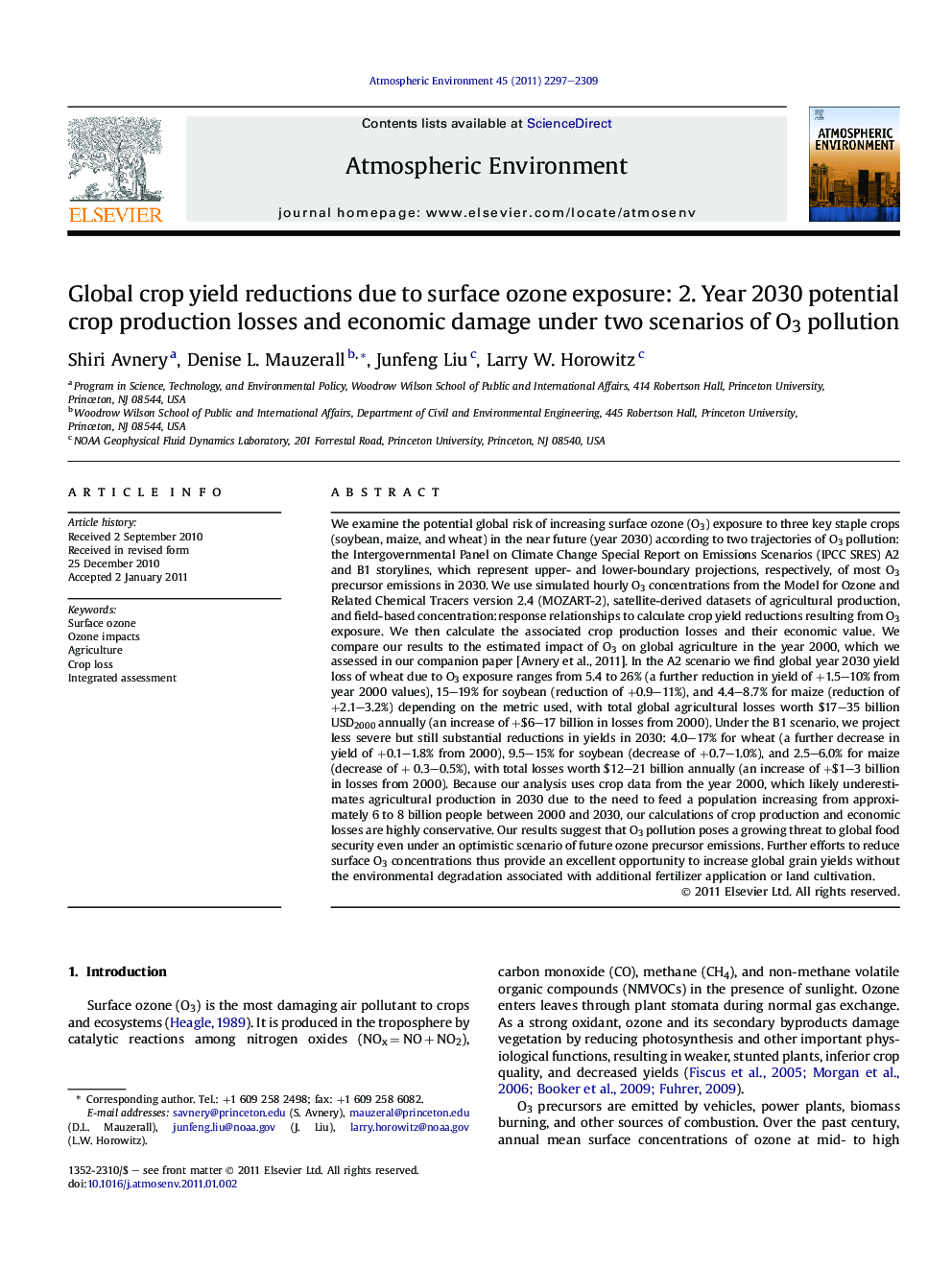| کد مقاله | کد نشریه | سال انتشار | مقاله انگلیسی | نسخه تمام متن |
|---|---|---|---|---|
| 4439855 | 1311035 | 2011 | 13 صفحه PDF | دانلود رایگان |

We examine the potential global risk of increasing surface ozone (O3) exposure to three key staple crops (soybean, maize, and wheat) in the near future (year 2030) according to two trajectories of O3 pollution: the Intergovernmental Panel on Climate Change Special Report on Emissions Scenarios (IPCC SRES) A2 and B1 storylines, which represent upper- and lower-boundary projections, respectively, of most O3 precursor emissions in 2030. We use simulated hourly O3 concentrations from the Model for Ozone and Related Chemical Tracers version 2.4 (MOZART-2), satellite-derived datasets of agricultural production, and field-based concentration:response relationships to calculate crop yield reductions resulting from O3 exposure. We then calculate the associated crop production losses and their economic value. We compare our results to the estimated impact of O3 on global agriculture in the year 2000, which we assessed in our companion paper [Avnery et al., 2011]. In the A2 scenario we find global year 2030 yield loss of wheat due to O3 exposure ranges from 5.4 to 26% (a further reduction in yield of +1.5–10% from year 2000 values), 15–19% for soybean (reduction of +0.9–11%), and 4.4–8.7% for maize (reduction of +2.1–3.2%) depending on the metric used, with total global agricultural losses worth $17–35 billion USD2000 annually (an increase of +$6–17 billion in losses from 2000). Under the B1 scenario, we project less severe but still substantial reductions in yields in 2030: 4.0–17% for wheat (a further decrease in yield of +0.1–1.8% from 2000), 9.5–15% for soybean (decrease of +0.7–1.0%), and 2.5–6.0% for maize (decrease of + 0.3–0.5%), with total losses worth $12–21 billion annually (an increase of +$1–3 billion in losses from 2000). Because our analysis uses crop data from the year 2000, which likely underestimates agricultural production in 2030 due to the need to feed a population increasing from approximately 6 to 8 billion people between 2000 and 2030, our calculations of crop production and economic losses are highly conservative. Our results suggest that O3 pollution poses a growing threat to global food security even under an optimistic scenario of future ozone precursor emissions. Further efforts to reduce surface O3 concentrations thus provide an excellent opportunity to increase global grain yields without the environmental degradation associated with additional fertilizer application or land cultivation.
► Surface O3 will have an increasingly detrimental impact on future crop yields.
► Yields of wheat, soybean, and maize could be reduced by up to 26% globally in 2030.
► Global losses up to 17% are possible even in an optimistic scenario of future O3.
► Agricultural losses worldwide may be worth $17–35 billion annually by 2030.
Journal: Atmospheric Environment - Volume 45, Issue 13, April 2011, Pages 2297–2309